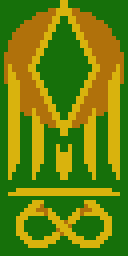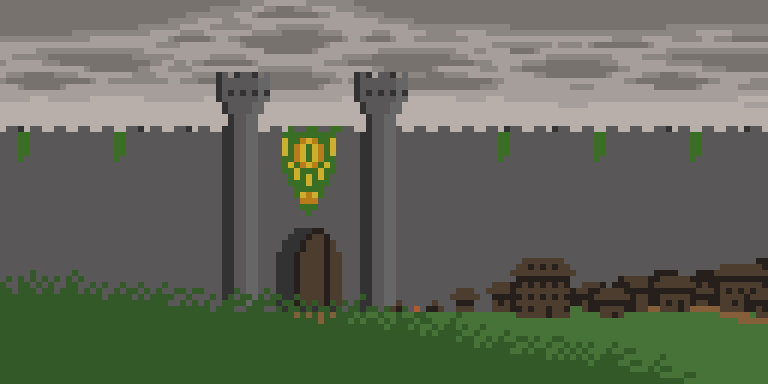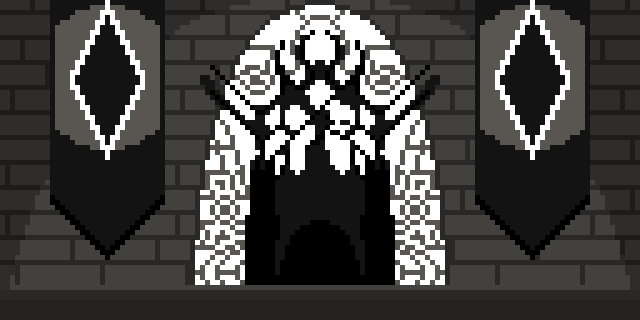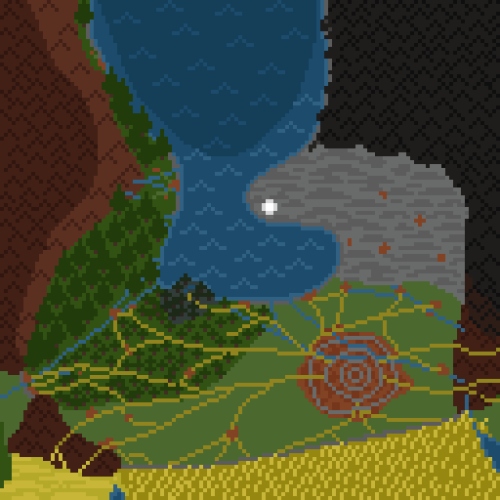Astarion
"Astarion" literally means "The Country", "One Country", while "Astarum" means "Citizen".
Roughly in the middle of Astarion lies "Asteya", "The Capital". Many nearby villages and smaller cities merged with Asteya over time and were surrounded by new city walls. The Capital has the area of a province or a small country and 24 rings of walls total, 11 of which are partially deconstructed. In the very centre of Asteya stands the castle of the Lakshtan, surrounded by a ring of administrative buildings. The next ring is the central plaza with parks, statues and and archcathedral. The closest rings house nobility and rich entrepreneurs, libraries, archives and museums. The farthest are for the craftsmen, miners, farmers, etc.
Religion and the government are very closely tied in Astarion. A few hundred years ago, Astarum were, suppossedly, visited by a god and swore their loyalty to it. They called it "Ayaroh", "The Endless One", or simply "Askaena", "The Deity". The ruler is even named "Lakshtan", "The Representative", and thought to be chosen by Askaena. Officially Astarum are subordinate to Askaena, and the Scaled are subordinate to Astarum.
Ayaroh is thought to be omnisient and nearly omnipotent. Its primary "spheres of influence" are shadows, fears and dreams, though it is capable of influencing anything. While Astarum don't openly deny the existence of the old gods, they don't treat them with any respect either, and have very tense relations with the Court.
Astarion has an impressive military, two thirds of which are recruited Scaled. Scaled are a long opressed ethnicity, defined by irregular green or greenish scales, many reptilian or serpent-like traits and a propensity to deformities and illnesses. They are not accepted as members of society, but often used in military or as a cheap labor force.
One of them is the old nobility, either bankcrupt, or forced to enter the world of businesses. Many of these are now landless or considerably less powerful, and seek to return to the good old days. Some are quite successful, and created the class of new nobility, among with wealthy merchants and enterpreneurs. Another important faction is that of the Whisperers - the scribes and priests in control of archives, taxation and laws. Some say, the Whisperers are the actual government of Astarion, and that they even choose the next Lakshtan. Either way, they always need to be taken into consideration when discussing new policies or laws. Lakshtan and their court rely heavily on the army, and high-ranking military officials are a faction of its own. They, among with new nobility, become local governors and are increasingly more involved with the colonies, that have been largely self-governing for a long time. The age of conquest for Astarion is in the past - now it just harvests the fruits of previous Lakshtans' labor. The colonies are treated more like close trade partners. Sometimes a forgotten treaty is uncovered, giving Astarion an advantage, but overall the colonies benefit from this kind of relationship too.
Most of tax money go to the army, because without its army, there wouldn't be Astarion. Above all else Astarum value loyalty and honor. Loyalty to the Deity, to the Astarion, to the above-standing. Honor of being a citizen, of being chosen by Askaena, of serving the Country. Many families pass their craft to their children, and there used to even warrior clans, loyal only to their lord. Now these are in decline, as government bureaucracy has almost replaced the houses of the old nobility.
Astarion is a huge geopolitical force, known for its prolonged wars with the Land of Death itself. It is surrounded by mountains on the east and far west, Shattered Lands and a desert on the northwest, the Sea of Sorrow on the north and an inpenetrable wall on the south. But though Astarion is geographically and politically isolated, it has some colonies, especially to the east.
Politics
As said earlier, Astarion is a theocratic dictatorship with a powerful bureaucratic machine. In the past, it has been feudal, but now the prefecture governors have little to no political power. Decades of peace has lead to loosening control over relatively satisfied peasants and remaining nobles. That's not to say government doesn't have control over its territories - it's mobile military can quickly quell skirmishes and rebellions, and so far, various institutions reliably collect taxes and ensure the obedience to the laws of Askaena. Respect and fear of the Deity is one of the reasons for Astarion's stability. Loyalty is the greatest virtue among Astarum, and traitors are taken care of incredibly quickly. Although the Lakshtan is the head of the state, they can't govern a country this vast by themselves. Lakshtan has a court of advisors and deputies that has factions of its own.One of them is the old nobility, either bankcrupt, or forced to enter the world of businesses. Many of these are now landless or considerably less powerful, and seek to return to the good old days. Some are quite successful, and created the class of new nobility, among with wealthy merchants and enterpreneurs. Another important faction is that of the Whisperers - the scribes and priests in control of archives, taxation and laws. Some say, the Whisperers are the actual government of Astarion, and that they even choose the next Lakshtan. Either way, they always need to be taken into consideration when discussing new policies or laws. Lakshtan and their court rely heavily on the army, and high-ranking military officials are a faction of its own. They, among with new nobility, become local governors and are increasingly more involved with the colonies, that have been largely self-governing for a long time. The age of conquest for Astarion is in the past - now it just harvests the fruits of previous Lakshtans' labor. The colonies are treated more like close trade partners. Sometimes a forgotten treaty is uncovered, giving Astarion an advantage, but overall the colonies benefit from this kind of relationship too.
History
Even without colonies, Astarion is huge. Peoples that predated it were quite diverse and their influence is still felt today. For example, common patterns or elements in painting include grass (Astarion is almost completely covered by vast flat grasslands), snakes and dragons, clouds, tides - all are relevant neither to Raitha, nor Askaena worship. Some of these societies were patriarchal, while others matriarchal. They practiced many religions, some are still in use - after all, Askaena is the Deity, but not the only deity. Aforementioned grass seem to have had religious significance to a lost culture, salt and the sea - to another. On the other hand, khurei still remain, still weave nets around their dead and still store memories and dreams in the knots and sewn symbols. These pre-Askaena religions also describe the origin of the Scaled - one legend stating that they were created from grass snakes by a jealous god as a replica of humans. But these snake-people were incomplete and even their creator abandoned them, and it was decided that the only reason for them to exist is to serve humans. Pre-Astarum had also found a way across mountains to what will later become the Court. Back then, those peoples weren't quite as xenophobic, and cultural cross-pollination brought the Five to the pre-Astarion. In time, the trade between them would slowly stop, until only the Eyareen maintain polite relations with Astarion. It is presumed that these peoples were joined together by alliances and conquests, and some time after (or after the age of conquest), were visited by the Deity. Then, they formed Astarion, the Country. Afterwards, the age of conquest began. Astarum advanced east to the very Dawn Ocean, conquering many local peoples and creating settlements of their own. These are now known as Ouranekum colonies ("ocean-wards"). Later, Astarum moved south and for the first time seriously confronted Kashta. This lead to a long and gruesome war, during which conquest stalled and the Wall was created. Some say, a few expeditions went deeper into the Kashta steppe, and even now their descendants live peacefully there and pay tribute to Kashta. In the north, Astarum have created settlements all over the edges of the Ocean of Despair, conquered some Ferrymen and some descended Lashtreenh monks, found the Land of the Dead and the icy desert that is believed to surround the Second Gate. There are some ports and villages, but, overall, the frozen desert is uncharted - it is almost impossible to traverse, with all its winds, cold and lack of natural resources.Society
There is a deep divide between peasants and people in the cities, especially in Asteya. Many cities are quite self-reliant, having massive plantations on the outskirts, craftsmen of all kind and little armies of guards. In the countryside to be successful, one has to satisfy the desires of the cities - be it resources, food, or maintainance of trade routes and castles. Astarion heavily relies on its military - it ensures peace in the motherland and in colonies, it intimidates dissidents and it protects the Wall. For humans, it is an honor. For Scaled, it is an opportunity. Astarion has won two wars with the Land of the Dead and conquered such vast territories for a reason: its army is exceptional. It consists of a core of professional human and lizardmen officers, and a huge amount of canon fodder Scaled. It has cavalry - few its neighbours can boast that, and the government sponsors the research of new and deadly techonologies.Most of tax money go to the army, because without its army, there wouldn't be Astarion. Above all else Astarum value loyalty and honor. Loyalty to the Deity, to the Astarion, to the above-standing. Honor of being a citizen, of being chosen by Askaena, of serving the Country. Many families pass their craft to their children, and there used to even warrior clans, loyal only to their lord. Now these are in decline, as government bureaucracy has almost replaced the houses of the old nobility.
Diplomatic relations
Astarion is very conservative and isolated, mainly because Astarum consider themselves superior to all the savages that surround them. To the east, beyond the Wall and a mountain range lie many villages and small cities that pay taxes to Asteya. These function largely as self-governing colonies. Astarion led wars with the Land of Death for a long time, and no one really knows the reason. For now, a fragile peace is forged. Most of what we know of the Land of Death comes from diplomacy missions to Astarion, for before this enigmatic place was completely isolated. To the south Astarion is separated from the steppe by a giant Wall. Local tribes of Kashta frequently tried to breach it, but to no avail. However, the Wall needs constant maintenance and a sizeable portion of the army to man it. To the south west lies the Western Wall, created and maintained by local Scaled, who are given the right to partially govern themselves in exchange. Beyond this wall lies the jungle and yet more Kashta, who too wanted to pillage Astarion for centuries. The lands of the Court are separated from Astarion by mountains and tribes of Kashta, and if these were out of way, Astarion would have long conquered the Court. The Court is very religious and proclaimed Astarion a land of heretics. Astarum openly despise the Court, considering its gods savage. Some members of the Court still trade with Astarion, but they aren't allowed far inland.
Astarion - country; Astarum - citizen; Astarian - related to the country of Astarion.
Type
Geopolitical, Country
Demonym
Astarum
Divines
Neighboring Nations
Ongoing negotiations of mutual coexistence
After the first two devastating wars, both Astarion and Lashtria wish to form some kind of agreement preventing future conflicts. It is complicated by the fact that the Land of Death wished to be as isolated as possible, and Astarion, winning side, wants to closely cooperate.
Tension on religious basis
The Court considers Astarion heretical, and Astarion considers the Court savage. Eyareen Empire trades with Astarion, but all the remaining members are very hostile. The lands of Court are separated from Astarion by Lasstreenh Mountains and Cestorian jungles. Astarion has vastly superior military and could easily conquer the Court, if not for Kashta.
Remove these ads. Join the Worldbuilders Guild












Comments
Author's Notes
If you want to learn about some aspect of Astarion in particular, feel free to ask! If you liked what you read, have any suggestions or spotted some errors or typos, let me know!